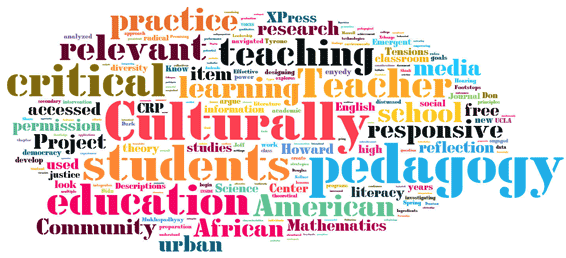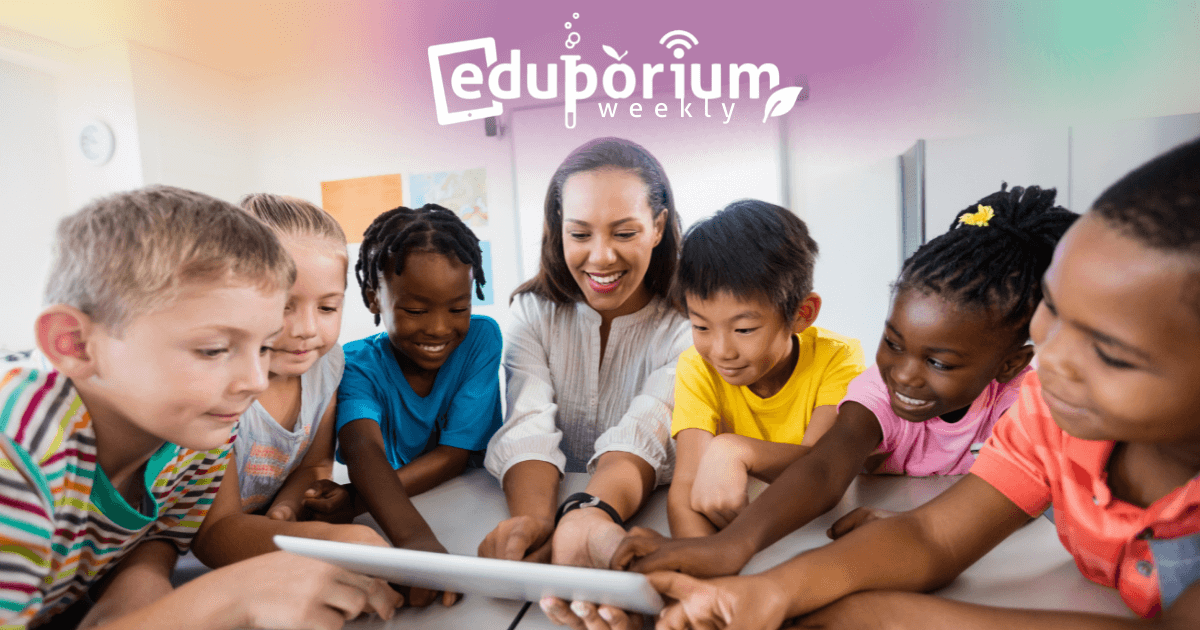There are so many unique teaching styles and ways of framing instruction these days. Teachers throughout one school or a district might all utilize different approaches, including teacher-centered, student-centered, competency-based, self-paced, and inquiry-based instruction among other potential styles. Then, we also have culturally responsive teaching—a teaching style in which educators will shift their instruction and their language to help students from different cultures better relate to the content they are discussing. With kids from so many cultures comprising our collective student body, this is particularly effective in cross-cultural classrooms. It can also be very helpful in getting students to better relate to course content by drawing on cultural context. Plus, a culturally responsive curriculum helps teachers to better connect with students and may even unlock other impactful benefits.
Practicing Culturally Responsive Teaching
Teachers obviously have a lot going on, and it can be tough to incorporate culturally responsive elements in lessons despite understanding why culturally responsive teaching is important. It’s not their fault, but some children just haven't had the same experiences or been part of the same environments as others. It does typically take a great deal of consideration for teachers to recognize this. At the same time, it can be challenging for them to reshape their instruction toward greater culturally responsive inclusion. It is usually worth it, however, to ensure certain students won't be missing out because they don't understand context. For teaching to be truly culturally relevant, there should be cultural considerations present in all aspects of instruction. It involves a lot of teacher self-reflection and should answer 'what,' 'how,' and 'why' questions.
Adding relevance to learning.
Culturally relevant instruction can enhance both the academic and personal successes of students. When teachers frame their words and examples in ways that everyone can understand, kids become much more likely to engage. This, then, leads to greater academic performance and students feeling more comfortable with their identities and experiences. It also helps them with developing interpersonal skills to help improve upon their interactions with peers. So, there are three main parts of culturally relevant pedagogy: academic achievement, cultural competence, and sociopolitical consciousness. Teachers who truly practice culturally responsive pedagogy know how to merge all three of them. And, this allows them to provide an equal mix that helps drive more valuable experiences for students.
Being culturally responsive to student identities.
Some experts argue that successful teaching is more about how educators think than about what they do. This is even more important when they are leading culturally diverse classes. Starting out with new ways of thinking, culturally relevant teaching then transforms into how educators carry out teaching. They often use this as a foundation for informing all other instructional practices as opposed to an add-on to their delivery. Putting this culturally relevant teaching into practice is often as simple as recognizing and celebrating each student’s unique identity, fostering their natural intelligence, and helping them reach their full potential. One prime example of this is celebrating Black English instead of trying to correct it. This shows that it's not all about helping students fit into the system but about shifts that make learning work for them.
Elements of Culturally Responsive Teaching
We already listed three crucial elements commonly associated with culturally relevant teaching: academic achievement, cultural competence, and sociopolitical consciousness. Each represents one important part and, collectively, they help drive instructional practices that are fully inclusive of every child. But, what do each of them really mean? When it comes to culturally relevant teaching, academic achievement will often involve teachers remaining committed to activating their students’ minds. Educators should try to set fully transparent expectations for each student and meet them where they are. To find success, teachers need to know the content, the student, and how to teach that student. They also, however, must consider what they’re teaching, why they’re teaching it, and how they’ll teach each child.
Cultural competence strategies for teachers.
The next element is cultural competence. This piece calls on educators to understand cultures and the role they play in both education and a child’s development. To do so, they can learn about the different cultures in their classrooms—something that's both eye-opening and enjoyable. Some students might share similar cultures since they, theoretically, may have grown up in the same area. Others, however, may have recently moved into the area, started at a new school, and come from an entirely different background. So, learning about each student’s culture and community while also examining their own identity, culture, and potential biases can help educators implement culturally responsive pedagogy. Then, students can see themselves reflected in the classroom and learn about others at the same time.
Being aware of students' backgrounds.
The third element is sociopolitical consciousness, which calls on teachers to educate both themselves and their students. This is good because students tend to respond when discussing personal and sociopolitical issues that may impact them directly. Some students or their communities may be more impacted by world events, which could affect how they relate to classroom content. Knowing students' feelings toward certain subjects and how their experiences shaped those beliefs could help educators incorporate more relevance. They could also encourage children to question certain normalities and to see themselves as social change agents. Receiving these sentiments from educators can go a long way in empowering students. They often begin thinking and acting as informed members of society and voice opinions that can spur transformation.

Strategies to Advance Culturally Responsive Teaching
There are many ways in which teachers can go about being more culturally responsive for their students. It starts with teaching diverse learners who require this support and extends to all other children as well. Like with many educational practices, it won't really take a ton of effort to start being more culturally responsive, either. If you're wondering how to get started with culturally responsive teaching, some strategies are pretty simple. It can even start with simply learning more about students. Learning about their backgrounds helps educators adapt teaching styles through open communication that can reveal core needs. Questionnaires, surveys, and old-fashioned conversations could really help teachers learn critical pieces of information for adjusting instruction so each student can learn in the best way possible.
Learning personal information about students.
Interviewing students one-on-one also helps educators gain a better understanding of each one’s hobbies, knowledge, values, and habits—information they may initially prefer to keep to themselves when in a group setting. Another culturally responsive strategy—particularly in math class—is to make word problems more relatable, which teachers can do by using student names and linking them to students' interests. Along the same lines, teachers can use vocabulary that students relate more to (some might call it slang). The point is that this could help to keep students' attention and allow them to develop greater trust and understanding. Guest speakers can also boost student interest and, in many cases, offer a fresh perspective. In preparing for culturally responsive teaching, know that this can really resonate with children, help better capture their interests, and even motivate those who share the same cultures.
Learning stations in culturally responsive teaching.
Learning stations allow educators to mix up how they deliver instruction with different options for students who learn differently. This is an opportunity to include elements from different cultures as well. Additionally, taking time to call on each student can help give them a voice. Not only can this keep them more engaged, it enables children to share their thoughts and their perspectives. It could also lead to improved inclusion in classroom discussions and any culturally responsive teaching activities. Using media (videos, images, etc.) from a variety of different cultures is also important. Perhaps more than any other way of practicing cultural relevance, kids often learn more when the examples contain familiar language, sights, and values that they recognize from their own culture—and teachers taking some time to find these resources is highly helpful.
Research on Culturally Responsive Teaching
We don't have a huge amount of research on various impacts of culturally responsive teaching, but it does impact students—even if they can't necessarily see it. Creating curricula that's more culturally relevant and recognizing and affirming student identities often helps improve outcomes. Aside from that, when students receive more culturally relevant instruction, they tend to exhibit improved behavior as well. In terms of their emotions, research has shown that applying key principles of culturally responsive teaching and proactive behavior management lead to improved student behavior, cooperation, and even engagement. There is a caveat, though. While some teachers have had success, a very small amount of them have actually tried using a culturally responsive curriculum.
What makes these efforts successful?
Research also indicates that educators sometimes believe they would be able to adapt their instruction to be more culturally relevant only to realize they were not super successful. Some have suggested that class instruction should be monitored so that an outside member of the school community can help identify any shortcomings in their attempts at culturally responsive pedagogy and help educators address their specific flaws. Another way to do this is with PD courses directly related to boosting culturally relevant pedagogical skills among educators. By drawing on research (though it may not yet be that extensive), school or district leaders could allow teachers to focus solely on developing these skills with workshops. It’s probably tough to actually implement, however, but it’s a thought that some education leaders should consider.
Providing feedback in culturally responsive teaching.
Currently, the consensus is essentially that there's not enough research to design official policies. So, that tells us we'll need a lot more research in this area. Plenty of teachers are likely willing to work with officials on culturally responsive strategies—work that's worth the time. State education leaders have a role to play as well by acknowledging the current programs (if any) and creating new, more in-depth programs that are accessible to all educators. It starts with identifying practices teachers use inside or outside the classroom and figuring out what works. By creating a detailed feedback loop, educators can determine what’s most effective and start developing formal approaches of their own. It could take years to finalize these kinds of initiatives or implement culturally responsive pedagogy but more in-depth research can happen any time.

Culturally Responsive Teaching in PBL
Project-based learning lesson plans are great for students for a lot of reasons. To tie into the theme of this post, two of the main ones are that these types of hands-on learning experiences are authentic and they'll help amplify student voice. With that said, PBL also presents an opportunity for educators to be mindful of different cultures when developing and assigning projects. It’s also a great opportunity for students to work on unique projects and teachers can certainly encourage this within any project-based learning curriculum. Learning communities are often defined by the diversity, equity, and inclusion that these leaders promote. As such, utilizing culturally responsive methods can help teachers gain the trust of all students. It may also create a deeper culture of respect in the classroom—something educators can work to perfect over time.
Connecting to culture to boost motivation.
For educators, recognizing and understanding why they became an educator can often reveal a lot. In PBL, teachers who know why they're in the education profession can also help ignite student passions and even succeed at maximizing student engagement. When students see the true passion teachers have, they tend to become more motivated to learn. This can also encourage them to share their own passions, hopes, and dreams, which may even have connections to these projects. From there, the driving questions for project-based learning modules should include conviction and emotion that students can use to make a personal connection to their own lives—and that question, which brings cultural relevance into play, could be unique for each student or different student groups.
Focusing on traditionally underserved students.
It’s also important that teachers and students avoid certain narratives in PBL, especially when they may be harmful or untrue. They should research particular topics as well as views from both sides to form unbiased opinions and apply them in projects. When teachers act as true leaders in project-based learning and keep children front and center, they can disrupt some troublesome norms in education. One of those unfortunate norms—around for decades—is students with particular backgrounds being underserved. Verbalizing their own thoughts and stories encourages students to do the same and truly listening often allows teachers to become more culturally aware. And, when students feel like they belong, that’s a powerful thing.
For the latest EdTech, STEM, and 21st century education news, follow us on Twitter and Instagram. Like us on Facebook, too, or sign up for our newsletter for our latest product announcements and offerings. If you have an idea for an Eduporium Weekly theme, send us a message on social media or comment below.




9 STEM Tools For CTE Classes In High School
Eduporium Weekly | Using Mixed Reality In Education
The Most Exciting Ways To Teach And Learn With The NAO Robot
Eduporium Weekly | Creating An Esports STEM Curriculum
Using Educational Robotics Tools Progressing From K-12
Eduporium Weekly | Coding Tools For Each Grade Level
8 SEL Skills Students Develop Through Hands-On Learning
Top 10 Job Skills For 2025 From The UBTECH Education Team
I hope this helps, and please let us know if you have any further questions! Also, feel free to reach out for a free consultation and personalized recommendations for STEAM tools for your specific situation.